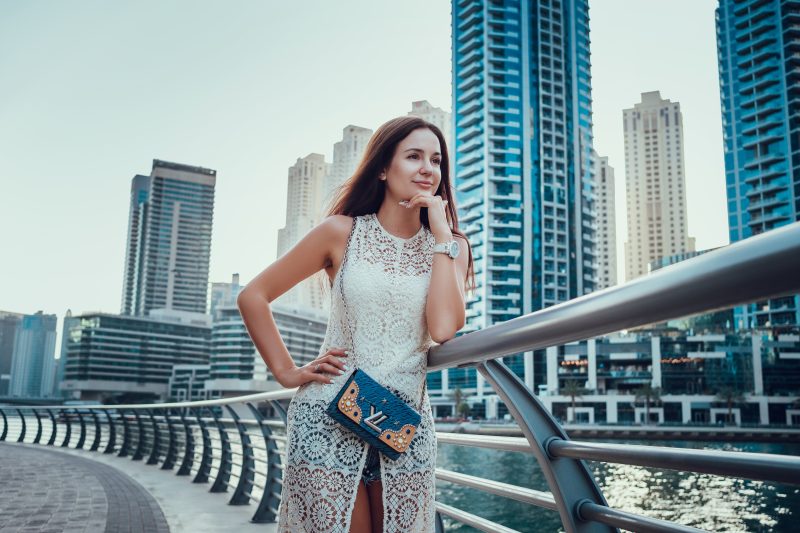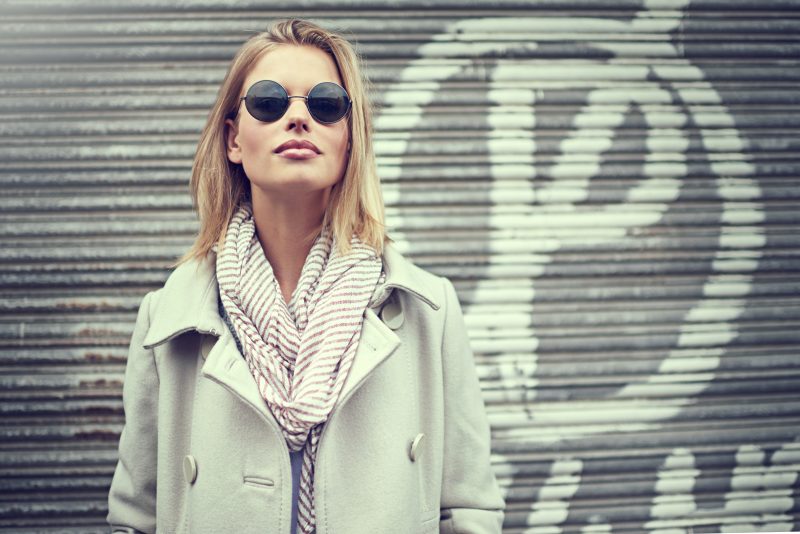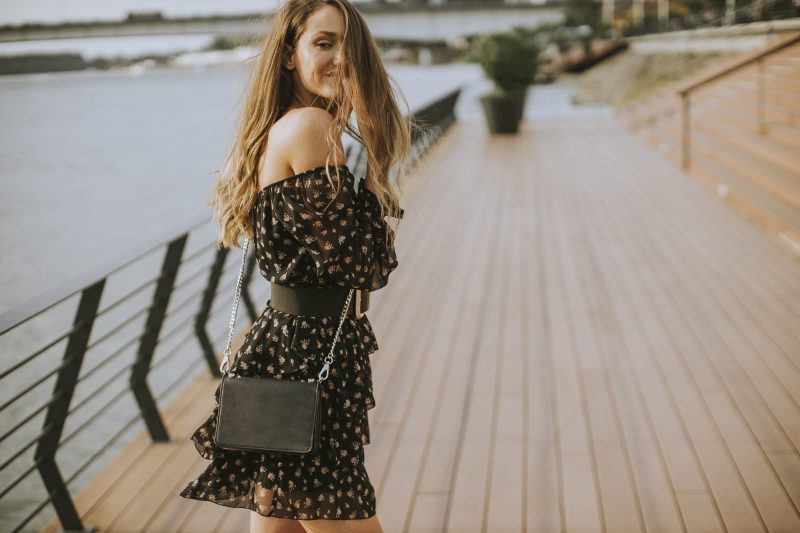My mother still has the photo evidence of my most humiliating childhood fashion moment. It’s summer 1998, I’m eleven years old, standing in our Brooklyn backyard with my hands triumphantly on my hips, wearing what I genuinely believed to be the absolute pinnacle of style: a tie-dye bucket hat, purple glitter sunglasses, a Limited Too graphic baby tee layered over a long-sleeve shirt (despite the 85-degree heat), a denim skirt over neon green bike shorts, mismatched slouch socks, and—the pièce de résistance—jelly sandals so purple and glittery they could probably be spotted from space.
“You wouldn’t let me leave the house unless you were wearing all of it at once,” my mom reminded me recently, cackling as she texted me the scanned photo for the thousandth time.
“You said you were ‘expressing yourself through layers.'”
I’ve spent two decades trying to emotionally distance myself from that fashion disaster. I deleted every photo of my teenage self wearing platform flip-flops from social media. I’ve pretended I never owned a pleated skirt with butterfly clips attached to the hem. I’ve repeatedly lied and said I “don’t remember” owning pants with words across the butt, despite photographic evidence to the contrary.
So imagine my existential crisis when, during Paris Fashion Week last fall, I found myself sitting across from the runway watching a Miu Miu model strut by wearing—I swear to god—a shrunken baby tee over a long-sleeve shirt, paired with a denim micro-mini, colorful slouch socks, and jellies. JELLIES. The fashion crowd around me nodded appreciatively, making notes on their phones. The look would go on to be featured in three major magazine editorials, hailed as “subversive nostalgia” and “commentary on Y2K recycling through a post-modern lens.”
I texted my mom from my seat: “The fashion world has lost its mind. They’re doing my exact 1998 outfit on the Miu Miu runway. JELLIES, MOM. JELLIES.”
Her response was immediate and irritating: “So you were ahead of your time! Should have kept those sandals!”
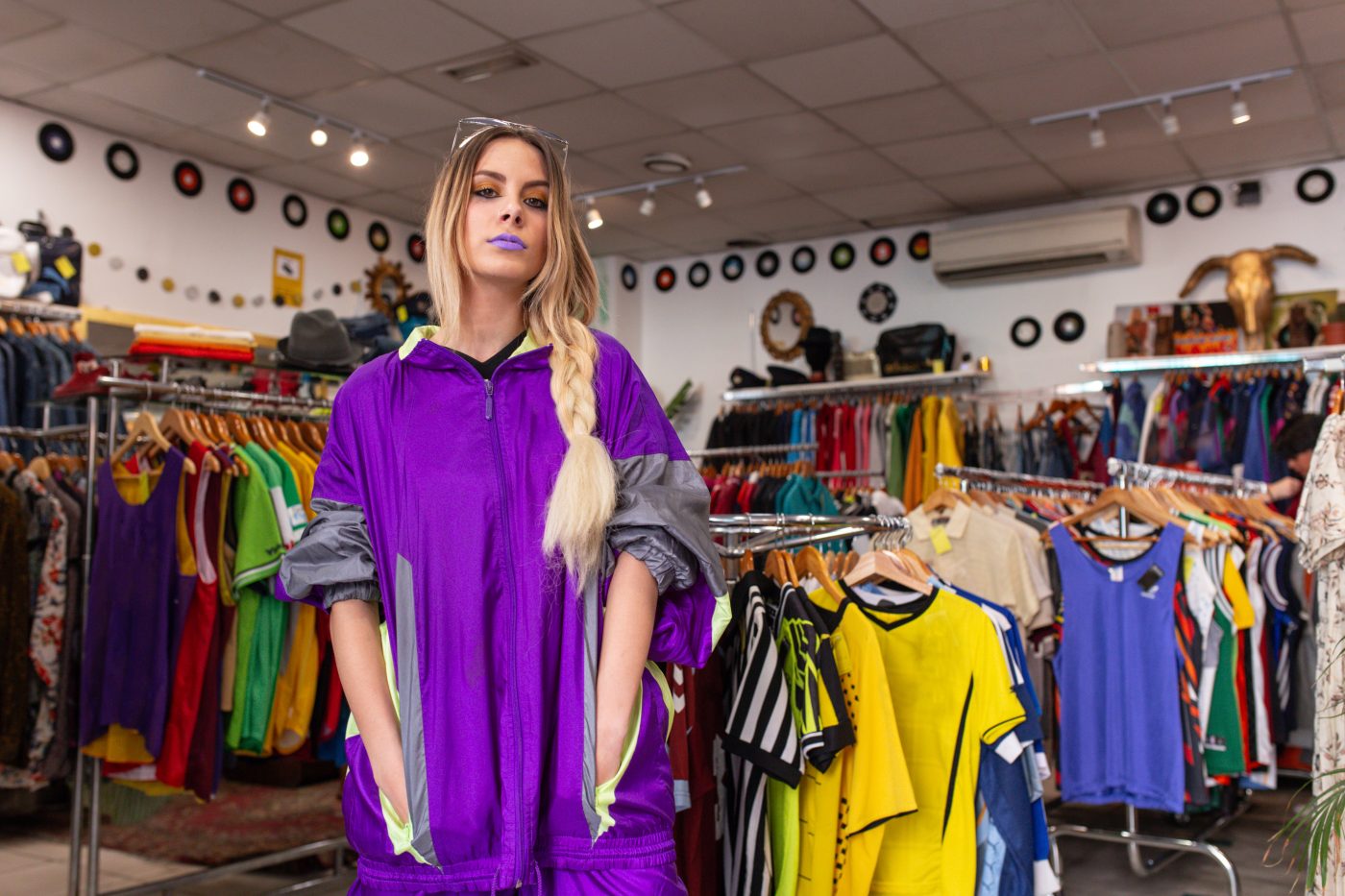
The thing is, she’s not wrong. The embarrassing childhood trends that millennial and Gen X women spent years recovering from are now being recycled, reinterpreted, and rereleased as high fashion. The very items we were collectively traumatized by—the ones we swore we’d never wear again—are now selling for hundreds of dollars at luxury retailers and being photographed on celebrities born too late to remember the original fashion trauma.
“Fashion operates on a 20-25 year nostalgia cycle,” explained Dr. Elizabeth Chen, fashion historian at Parsons School of Design, when I called her to make sense of this phenomenon. “What feels dated or embarrassing at 10-15 years post-trend often feels fresh and exciting at 20-25 years. Enough time has passed for reinterpretation, but the aesthetic still carries cultural touchpoints that resonate emotionally.”
In other words, we’re at peak “your childhood embarrassment is now runway gold” moment. The trends from the mid-90s through early 2000s—the very ones many of us experimented with during our most awkward years—are being mined for inspiration by designers who recognize their cultural potency.
Let’s talk specifics. Beyond my personal jelly sandal trauma, here are the childhood fashion crimes currently being pardoned and elevated by high fashion:
Butterfly clips, those flimsy plastic hair accessories that were essentially mollusk-shaped chip clips, are now runway-approved. Bella Hadid wore a full head of them styled by celebrity hairstylist Evanie Frausto. Coperni’s recent show featured models with delicate gold and silver butterfly clips adorning sleek center parts. Even Chanel has entered the chat with subtle butterfly-wing-shaped barrettes retailing for approximately the same as a monthly car payment.
Platform flip-flops—the shoes responsible for countless teenage ankle injuries circa 2001—have been resurrected by The Row as minimal leather platform thongs and by Versace as vibrant statement pieces. The difference between these and their Steve Madden Slinky predecessors? About $600 and slightly more ankle support.
Pleated mini skirts, particularly in plaid and paired with knee socks, have transcended their Limited Too origins to become Miu Miu’s most viral piece in years. The ultra-short, low-rise version sparked waitlists internationally and was quickly knocked off by every fast fashion brand. The look that once screamed “I’m dressing like Cher from Clueless for Halloween” now reads as high fashion when paired with an oversized leather jacket and serious attitude.
Graphic baby tees, particularly with inane phrases or rhinestone embellishments, have been reclaimed by luxury brands like Marc Jacobs and independent designers like Praying, whose controversial “God’s Favorite” baby tee sparked religious debate and immediately sold out after being worn by several celebrities. The shrunken proportions once considered a teenager’s mall staple are now studied aesthetic choices rather than just what happened to be on the rack at Contempo Casuals.
Colorful slouch socks—once the domain of roller rinks and slumber parties—have been reinterpreted by brands like Gucci and Prada as statement accessories, pulled high and worn with luxury loafers or heels rather than Skechers.
But perhaps no childhood trend resurrection has provoked more millennial PTSD than the return of low-rise jeans. The denim style that dominated the early 2000s and required constant vigilance to avoid exposing far too much during everyday activities has returned, championed by designers like Glenn Martens at Diesel and celebrities born too recently to remember the horror of sitting down in low-rise jeans in a high school cafeteria.
“I actually hid a pair of my old low-rise Frankie B jeans in the back of my closet because I couldn’t bear to look at them, but also couldn’t bear to throw them away,” admitted Emma, a fashion forecaster I met for coffee to discuss this nostalgic trend cycle. “Now they’re worth serious money on resale sites as ‘Y2K vintage.’ It’s both vindicating and deeply disturbing.”
What’s most interesting about this revival is how designers are reinterpreting rather than merely copying these past trends. The platform flip-flops at The Row look nothing like their mall ancestors, with elevated materials and sophisticated colorways. Marc Jacobs’ baby tees comment on the original trend through a lens of irony and self-awareness. Miu Miu’s ultra-short pleated skirts are worn with luxurious cashmere sweaters and proper shirts rather than glittery graphic tees, creating a tension between childhood nostalgia and adult sophistication.
“It’s not about exact replication,” explained Miguel, a stylist who has worked with several luxury brands. “It’s about extracting the emotional and cultural significance of these pieces and elevating them through material, proportion, and context. The best designer interpretations make you feel the nostalgia without looking like you’re wearing a costume from your middle school years.”
This sentiment was echoed by several industry insiders I spoke with. The key to the successful revival of these formerly embarrassing pieces lies in their recontextualization. It’s not about wearing head-to-toe Limited Too again; it’s about incorporating one nostalgic element into an otherwise sophisticated outfit. It’s the tension between childish and luxurious that creates something fresh rather than simply recycled.
“I’ve styled several editorials playing with these childhood references,” said Taylor, a fashion editor at a major publication. “The trick is balance. A butterfly clip moment works when everything else is minimal and adult. Jelly sandals feel subversive rather than childish when paired with tailored pieces. It’s the contrast that makes it feel modern.”
When done right, there’s something powerful about reclaiming the very trends we were once mocked for. After all, many of us first discovered our love of fashion through these playful, colorful, often impractical pieces. Before we learned about investment basics and timeless wardrobes, we expressed ourselves through glitter, bright colors, and yes, excessive layering. There’s joy in those references that more serious, adult fashion sometimes lacks.
“I’ve actually come full circle on some of these trends,” confessed Zoe, a 38-year-old creative director I interviewed. “I was viciously teased for my platform flip-flops and baby tees in middle school. I spent my twenties running away from anything that reminded me of that era. But now, wearing a sophisticated version of those pieces feels like reclaiming something. Like I’m saying ‘actually, 13-year-old me had great style instincts, she was just ahead of her time.'”
I’ve been thinking about Zoe’s perspective a lot lately. Maybe there’s something healing about seeing the very trends we were once insecure about elevated to luxury status. Maybe it’s not just nostalgia driving this revival, but a collective desire to validate our younger selves and their aesthetic experiments, however cringe-worthy they seemed at the time.
This theory was reinforced when I found myself at a vintage shop in Williamsburg last month, standing in front of a display of pristine jelly sandals (priced at $95, because apparently plastic shoes appreciate in value over three decades). A group of Gen Z shoppers were excitedly trying them on, marveling at how “unique” and “cool” they were.
I nearly launched into a stern lecture about the blisters those shoes would give them and how we used to buy them at Payless for $12.99, but something stopped me. Their genuine excitement and lack of irony was disarming. They weren’t wearing jellies to be funny or reference the past—they were wearing them because, removed from their original context, the shoes are genuinely interesting designs. Translucent, colorful plastic footwear is objectively fun, regardless of what emotional baggage I’ve attached to it.
In a strange moment of fashion evolution, I found myself asking a sales associate if they had the purple glitter version in a size 8.
“For your daughter?” she asked.
“No,” I replied, feeling simultaneously ancient and rebellious. “For me.”
The jellies now sit in my closet alongside my “grown-up” shoes—my investment leather boots, my professional heels, my sensible flats. I haven’t quite worked up the courage to wear them out of the house yet, but their presence feels like a small revolution. A tiny acknowledgment that perhaps my eleven-year-old self, in all her layered glory, wasn’t entirely wrong about what brought her joy in getting dressed.
I’m not saying we should all rush out and recreate our most embarrassing childhood outfits head-to-toe. I draw the line at butterfly clips in my hair or words across my butt. But there’s something liberating about making peace with the fashion cycles we can’t control and finding humor in watching our most awkward style phases reinterpreted through a luxury lens.
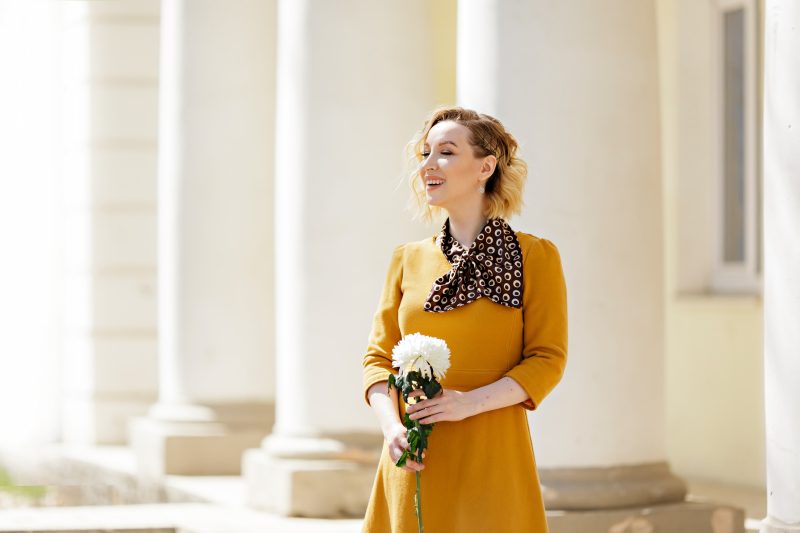
If you told eleven-year-old me that someday fashion editors would be nodding approvingly at outfits nearly identical to my most embarrassing fashion disasters, I never would have believed you. But here we are, with Miu Miu essentially recreating my 1998 summer look on runways to critical acclaim.
I sent my mom a selfie of me holding the purple glitter jellies I’d bought, expecting her to tease me. Instead, she replied: “Fashion always comes back around if you wait long enough. Should I start saving your current clothes for when they’re cool again in 2045?”
And honestly? She might be onto something. Maybe I should be photographing my current “sophisticated adult” outfits more diligently. At the rate fashion is cycling, my sensible straight-leg jeans and oversized blazers might be triggering fashion PTSD for me in twenty years while today’s teenagers wear them down future runways.
In the meantime, I’m still working up the courage to actually wear those jelly sandals out of the house.
Maybe I’ll ease in by pairing them with an otherwise entirely black outfit and pretending it’s an ironic choice. Or maybe I’ll just go full childhood redemption and add the slouch socks too. After all, if Miu Miu says it’s fashion, who am I to argue?
